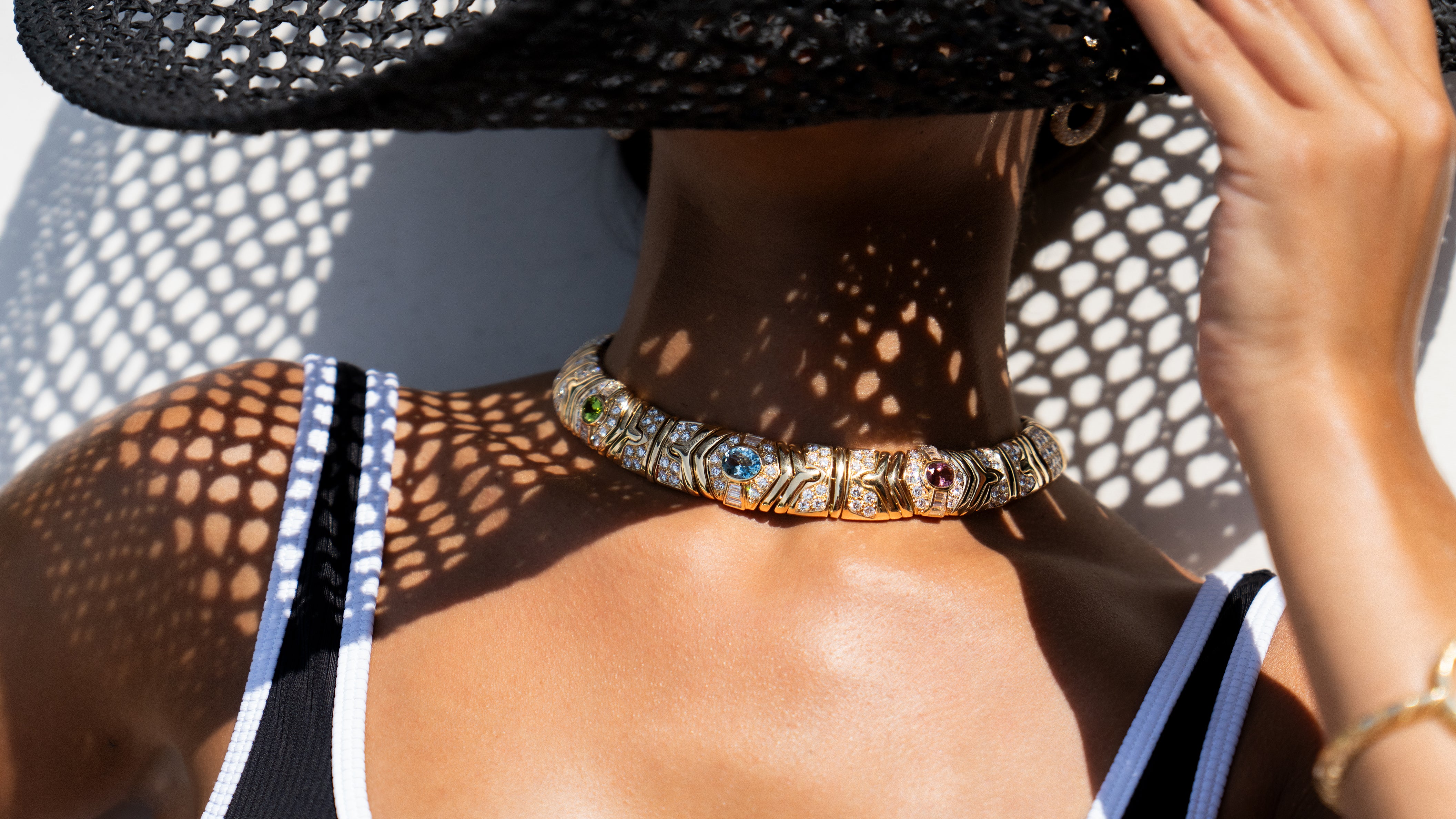J.E. Caldwell & Co.
For 164 years, J.E. Caldwell & Co. was a landmark jeweler in Philadelphia, highly respected for its exquisite jewelry and silverware. But, like many jewelers, it was in creating jewels during the Art Nouveau and Art Deco periods that this jeweler would make its lasting mark.
From Poughkeepsie to Philadelphia
James Emmott Caldwell began life in 1813 in "The Queen City of the Hudson" (Poughkeepsie, New York). He attended classes with many esteemed classmates who helped shape the young nation. Under the supervision of master silversmith Peter Perret Hayes, Caldwell, at age 14, was the youngest apprentice in the establishment. The oldest was Joseph T. Bailey, proprietor of what would become Bailey, Banks & Biddle.
Having acquired his status as a master silversmith in 1835, Caldwell moved to New York City, where he began to learn watchmaking as an apprentice to Samuel Ward Benedict. One year later, he relocated to Philadelphia and began working first with a wholesale jeweler, then with a watch importer and jewelry manufacturer.

In 1839, Caldwell partnered with James M. Bennett and founded "Bennett & Caldwell," described as a "wearable arts emporium." When Bennett passed away, Caldwell took up with John C. Farr, one of his former employers, and the business changed names, becoming J.E. Caldwell & Co.
In 1868, J.E. Caldwell moved to 902 Chestnut Street.
Upon his death in 1881, Caldwell's son, James Albert, took over the reins. In turn, his son, James Emmott, his grandfather's namesake, succeeded him.
The firm changed hands many times. In 1924, J.E. Caldwell moved into the majestic space at 1339 Chestnut Street. The store itself was a work of art, boasting 17 French-cut crystal chandeliers suspended from 20-foot ceilings and an interior designed by architect Horace Trumbauer in the French Regency style. The elaborate setting dovetailed perfectly with the tastes of the jeweler's wealthy clientele. Philadelphia's socialites with a yen for European-style jewelry were the desired audience.

Over the years, additional branch locations debuted, but declining sales, a changing neighborhood, and high overhead forced J.E. Caldwell to close its flagship store in 2003. The only remaining storefront resides in Jewelers Row in Philadelphia.
Silver & Giftware
J.E. Caldwell had a solid reputation as a silversmith, as well as a jeweler. Objets d'art were also part of the firm's assortment. Elaborate silver housewares included tea and coffee services, punch bowl sets and flower baskets, as well as plates, utensils, and other traditional dinnerware.
Timepieces
J.E. Caldwell offered a wide selection of American and imported timepieces and clocks of the most exceptional quality. Especially enduring are their pocket watches and platinum and diamond-decorated wristwatches from the Art Deco era.
Trend Setters
J.E. Caldwell received special recognition for their pretty Belle Epoque jewels, featuring platinum and gem-set pieces admired for their technical expertise.
While the jeweler had always enjoyed the custom of society's finest, it was during the Art Nouveau and Art Deco periods that J.E. Caldwell truly flourished. Its artisans were instrumental in leading the trends, their handcrafted designs considered by many to be the definitive jewels of these periods. Traditional materials were employed, including platinum and gold settings with diamonds, precious, and semi-precious gems.

Art Nouveau pieces by J.E. Caldwell featured a variety of floral motifs, nymphs, and designs replete with curves and swirls. With the dawn of the Art Deco craze, the artisans again stepped up and began setting the pace, sealing their reputation for superior style as well as uncompromising quality. A piece from J.E. Caldwell is timeless; its value treasured to this day.
Notables
- A stunning platinum necklace, created during World War I, featured a tassel of pearls, tipped in sparkling diamonds that emanated from a teardrop-shaped pendant awash in pavé-set diamonds. The beautifully patterned chain was dotted with additional diamond accents.
- A patriotic brooch depicting the American flag, also created during the Great War, was comprised of baguette rubies and diamonds to form the stripes, the field of blue created by sapphires with diamond stars. The platinum brooch was completed with the addition of a gold tassel.
- A 1920s flower brooch signed by J.E. Caldwell & Co. featured an amethyst-petaled flower with a vine of black enamel and diamond-decorated leaves, all encircled in a frame of diamonds.

Distinctions
- In 1876, J.E. Caldwell had an exhibit at the Centennial International Exhibition in Philadelphia, the first official World's Fair held in the United States.
- J.E. Caldwell was commissioned to create a silver service, which was presented to the Navy and the newly commissioned cruiser U.S.S. Pennsylvania in 1905. It was later carried aboard the battleship U.S.S. Pennsylvania, and the aircraft carrier Valley Forge before being returned to the state in 1971.
- The firm planned and designed several public memorials and prize cups for important Meet and Show events held in the Philadelphia area.
Shop Our Collection of J.E. Caldwell Pieces

